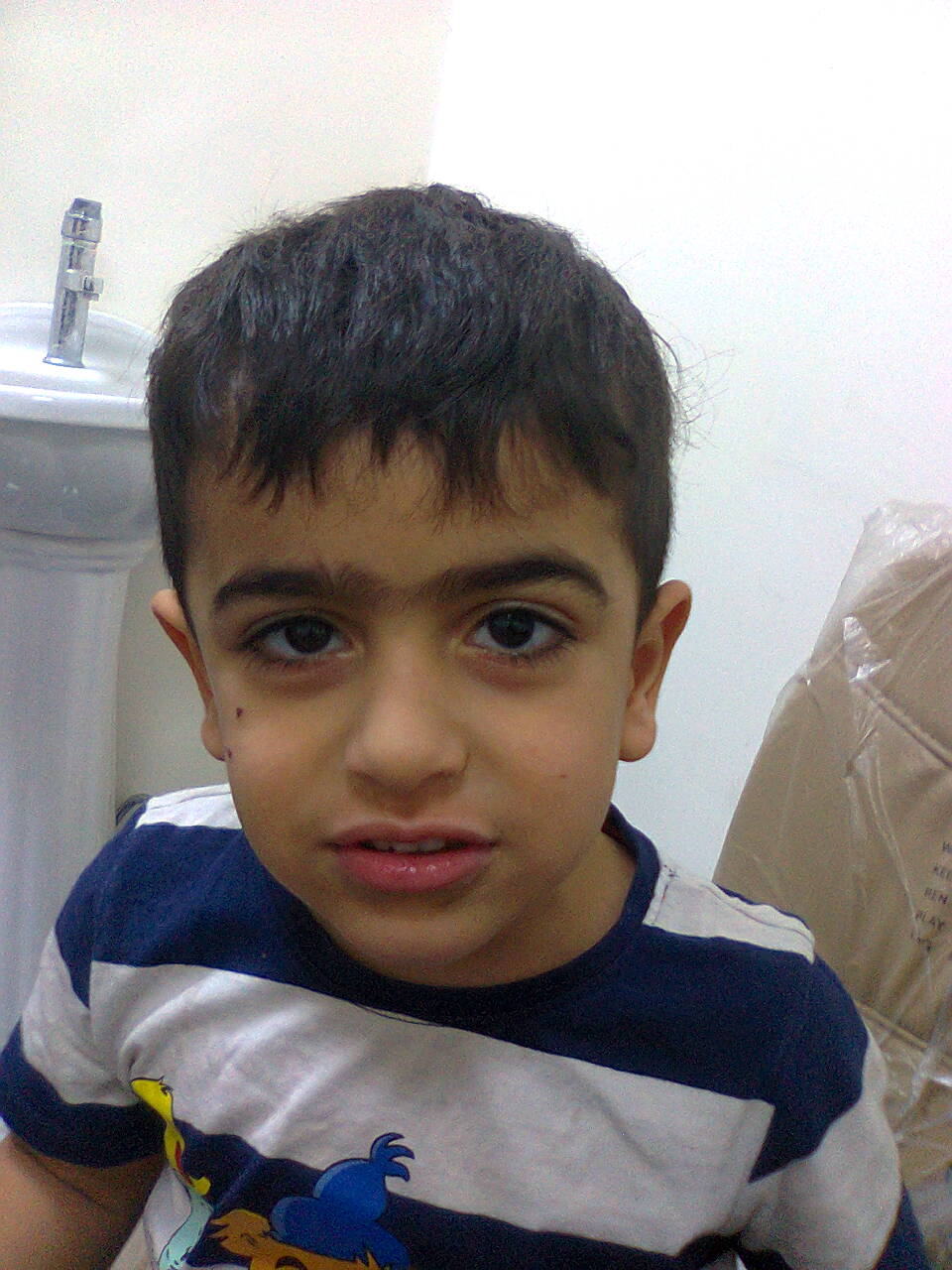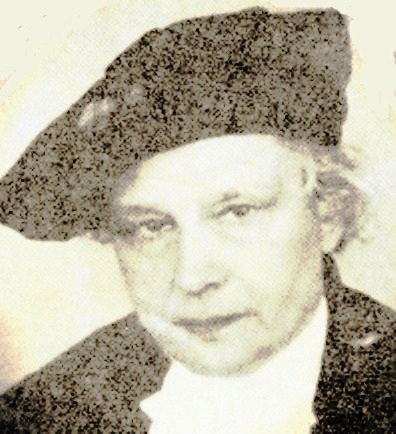Research Article | DOI: https://doi.org/10.58489/2833-0951/007
Treatment of Cornelia de Lange syndrome: Evidence-based medicine and expert opinion
Advisor in Pediatrics and Pediatric Psychiatry Children Teaching Hospital of Baghdad Medical City Head, Iraq Headquarter of Copernicus Scientists International Panel Baghdad, Iraq.
*Corresponding Author: Aamir Jalal Al-Mosawi
Citation: Aamir Jalal Al-M (2022). Treatment of Cornelia de Lange syndrome: Evidence-based medicine and expert opinion. Biomedical and Biotechnological Sciences. 1(2). DOI: 10.58489/2833-0951/007
Copyright: © 2022 Aamir J.Al-M., this is an open access article distributed under the Creative Commons Attribution License, which permits unrestricted use, distribution, and reproduction in any medium, provided the original work is properly cited.
Received: 23 July 2022 | Accepted: 02 August 2022 | Published: 10 August 2022
Keywords: Cornelia de Lang syndrome, treatment, expert opinion.
Abstract
Background: Cornelia de Lange syndrome is a rare genetic condition of highly variable phenotype making ranging from classic syndrome with many cardinal features to mild syndrome with less characteristic features.
Materials and methods: The mother of a three and half years old boy brought her son to our clinic because of significant developmental delay and over-activity. The mother denied the presence of relevant family history.
Results: The boy was mentally retarded and had facial dysmorphic features including thick eyebrows with synophrys, long or smooth philtrum, thin upper lip vermilion, and low set ears. The boy poor adaptive skills and has not achieved urine and bowel control and was unable to hold spoon appropriately to feed himself. He had no speech development and was not saying any word. At the clinic, he was very active, but he was responding to name and had acceptable eye contact and therefore, he was not considered to have autistic features. It was not possible to convince him to take a pen to scribble.
Based on our extensive published experiences with treatment of mental retardation syndrome, we recommended an initial therapeutic course which included a course of intramuscular piracetam 600 mg given daily in the morning every third day (Ten doses over one month).
Conclusion: An expert therapeutic recommendation for the condition is described.
Introduction
Cornelia de Lange syndrome is a rare genetic condition of highly variable phenotype making ranging from classic syndrome with many cardinal features to mild syndrome with less characteristic features. Patients having the classical disorder have growth and mental retardation and distinctive facial dysmorphism including thick and / or long eyebrows commonly with synophrys, short nose with depressed nasal bridge and/or upturned nasal tip, long or smooth or indistinct philtrum, thin upper lip vermilion and/or downturned corners of mouth, and low set ears. The diagnosis of the syndrome is generally made on clinical basis. The majority of cases are thought to be caused by spontaneous genetic mutations [1].
Materials and methods
The mother of a three and half years old boy brought her son to our clinic because of significant developmental delay and over-activity. The mother denied the presence of relevant family history.
Results
The boy was mentally retarded and had facial dysmorphic features including thick eyebrows with synophrys, long or smooth philtrum, thin upper lip vermilion, and low set ears (Figure-1).

The boy poor adaptive skills and has not achieved urine and bowel control and was unable to hold spoon appropriately to feed himself. He had no speech development and was not saying any word.
The boy also had behavioral and sleep abnormalities including biting others,
At the clinic, he was very active, but he was responding to name and had acceptable eye contact and therefore, he was not considered to have autistic features. It was not possible to convince him to take a pen to scribble.
Based on our extensive published experiences with treatment of mental retardation syndrome [2-7], we recommended an initial therapeutic course which included a course of intramuscular piracetam 600 mg given daily in the morning every third day (Ten doses over one month).
Risperidone 0.5 mg was given orally at night and prochlorperazine 2.5 mg was given orally at 1pm to control the behavioral and sleep abnormalities and over-activity.
Discussion
Cornelia Catharina de Lange syndrome was named after Dutch pediatrician Cornelia Catharina de Lange [Figure-2], who described two patients in 1933, and in1938, she reported the autopsy findings of her first patient, and described a third patient. McArthur RG, Edwards (1967) estimated that 69 cases, including nine autopsies, have been reported in the literature and reported another 20 patients with the syndrome [1].
Thereafter, about 41 case of the syndrome were reported during the 1960s, including the cases reported by Crisalli and colleagues,1967;Lee and Kenny,1967; Marsella,1967; Huang, et al,1967 (Two cases); Ganassi, et al,1968(Two cases); Stånescu and colleagues,1968; Beer and colleagues,1968(Two cases); Hillman, et al,1968; Familant, 1968; Calò and colleagues,1968 (Four cases); Li Moli, 1968 (Two cases); Klosovskiĭ, et al (1968); Bartsocas and colleagues,1968;Kaplan,1968; Ferenczy and colleagues,1968; Broholm and colleagues,1968; Calò and colleagues,1968; Szczepański (1969); Koike, et al (1969); Pelc and colleagues,1969; Kondo and colleagues,1969 (Two cases); Okita and colleagues,1969; Boon, 1969; Fazekas and Nagy, 1969; Jacoby and Bonham, 1969; France and colleagues,1969; Cherington and colleagues,1969; Feldioreanu, et al, 1969; Pashayan, et al, 1969 (Three cases); Say and colleagues,1969;De Tomasi and Catapano,1969 [1].

During four decades (1930s, 1940s, 1950s, 1960s), about 130 cases of Cornelia syndrome were reported in the medical literature.
Parenteral piracetam has been used safely and with a benefit in a variety of childhood neuropsychiatric disorders, and it is one of the most important that have been used with benefit in mental and developmental retardation of various types and etiologies. Piracetam beneficial effects on impaired cerebral functions include improving neuronal and cognitive functions, increasing cerebral blood flow and oxygen consumption, improving neurotransmitter’s function and brain neurotransmission. Piracetam is not associated with important side effect nor has acute toxicity at the therapeutic doses. Piracetam has been used with important benefits in the treatment of cerebral palsy and other childhood neuro-psychiatric disorders [2-7].
Conclusion
An expert therapeutic recommendation for the condition is described.
Acknowledgement
The author would to express his gratitude for the parents of the patient who accepted publishing the photos of their son. Figure-2 was included in a previous author publication, but the author has its copyright.
References
- Al-Mosawi AJ. Cornelia De Lange Syndrome in Iraq. Clinical medical reviews and reports February 24, 2020; 2(2):1-4. Doi:10.31579/cmrr.2020/010
View at Publisher | View at Google Scholar - Al-Mosawi AJ. (2019 June 21) The etiology of mental retardation in Iraqi children. SunKrist Journal of Neonatology and Pediatrics.1(1):1-9. Article No: sjnp-v1-1001. Doi: 10. 46940/sjnp.01.1001. Doi: 10.5281/ zenodo. 3878451
View at Publisher | View at Google Scholar - Al-Mosawi AJ. (Jan 2020) The use of piracetam and cerebrolysin in the treatment of agenesis of corpus callosum with colpocephaly. EC clinical and medical case reports; 3(1): 01-05. Doi: 10.5281/ zenodo.3892231
View at Publisher | View at Google Scholar - Al-Mosawi AJ. (April 13, 2020) A Unique experience with mental and developmental retardation: Innovative Medical therapies for idiopathic mental retardation. EC Clinical and Medical Case Reports; 3(5): 42-54. Doi: 10.5281/zenodo.3892214 5.
View at Publisher | View at Google Scholar - Al-Mosawi AJ. (May 2020) Recent Uses of Piracetam in Pediatric Neurology. SunKrist Neurology, Neurosurgery and Stroke Journal; 2 (1): 1002 (1-5). Doi:10.46940/snnsj.02. 1002
View at Publisher | View at Google Scholar - Al-Mosawi AJ. (June 29, 2020) The Treatment of a Child with Birth Asphyxia Induced Brain Atrophy, Adrenal Hemorrhage, and Bi-lateral Hyperoxaluric Nephrocalcinosis: A Challenging Case and a Unique Experience. Open Access Journal of Biogeneric Science and Research (ISSN: 2692-1081); 2(2): 1-6. Doi: 10.5281/ zenodo.5069460
View at Publisher | View at Google Scholar - Al-Mosawi AJ. (2020 August 17) Treatment of a boy with idiopathic mental retardation: From uneducable to educable. SunKrist Clinical and Medical Case Reports Journal; 2 (1):1-6. Scmcrj-v2-1007.Doi: 10.5281/zenodo.3992208
View at Publisher | View at Google Scholar - Al-Mosawi AJ. (July 21 2022) Treatment of Williams syndrome: Evidence-based medicine and expert opinion. Biomedical and Biotechnological Sciences; 1(2): 1-3. Doi: 10. 5281/zenodo.6874362
View at Publisher | View at Google Scholar